Pack your camping gear with confidence and adventure into Ontario’s wilderness safely by knowing the latest rules that protect both you and our precious parklands. Whether you’re a first-time camper or a seasoned outdoor enthusiast, understanding current camping regulations isn’t just about following laws—it’s about preserving our natural spaces for future generations while ensuring everyone’s outdoor experience remains positive and memorable.
From proper food storage that keeps wildlife wild to fire safety protocols that safeguard our forests, these essential guidelines form the backbone of responsible camping in Ontario Parks. Recent updates to camping regulations reflect changing environmental needs and growing visitor numbers, making it more important than ever to stay informed before you pitch your tent.
Let’s explore the key rules you need to know for your next camping adventure, including updated quiet hours, pet policies, and site occupancy limits. These guidelines aren’t just restrictions—they’re your blueprint for an unforgettable outdoor experience that respects nature and fellow campers alike.
Reservation and Check-in Requirements
Online Booking Updates
Planning your camping adventure just got easier with Ontario Parks’ updated online reservation system! To master Ontario park reservations, you’ll need to book your site up to five months in advance of your arrival date. The new system opens daily at 7:00 AM EST, giving everyone a fair chance to secure their preferred spots.
Pro tip: Create your account before the booking day and save your preferred sites as favorites. This way, you’ll be ready to click and book when the system opens! Remember to have your vehicle details and the names of all campers handy during the reservation process.
The system now also features real-time availability updates and interactive campsite maps, making it easier to visualize your perfect spot. Plus, you’ll receive instant confirmation and can manage your booking through the user-friendly mobile app. Just remember, full payment is required at the time of booking to secure your reservation.
Check-in Procedures
Arriving at your campsite starts with a smooth check-in process. Head to the park office during operating hours (typically 8:30 AM to 10:00 PM) with your reservation confirmation and a valid government-issued photo ID. If you’ve booked multiple sites, make sure you have the primary contact person’s information for each reservation.
Pro tip: Arrive at least an hour before sunset to set up camp comfortably! During peak season (June-September), consider checking in after 2 PM to avoid the busiest times.
You’ll need to register all vehicles and get your parking permit displayed. The park staff will provide you with a camping permit, site map, and any specific park rules or alerts. They’ll also share details about quiet hours, wildlife awareness, and firewood regulations.
Remember to keep your permit visible at your campsite throughout your stay. If you’re arriving late, call ahead to arrange an after-hours check-in process.
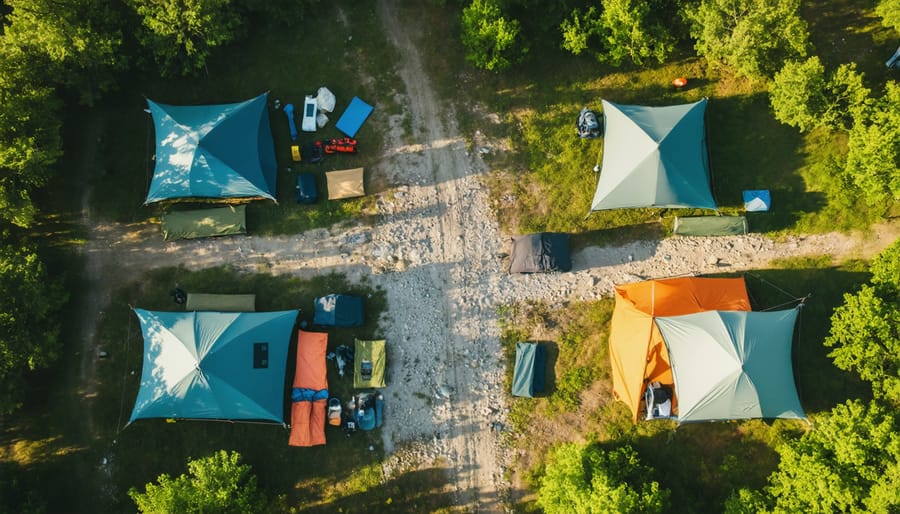
Campsite Setup and Management
Site Occupancy Limits
Ontario Parks has updated its site occupancy limits to ensure everyone can enjoy their camping experience while preserving our natural spaces. Most regular campsites now accommodate up to six people and two vehicles, though some parks might have different restrictions based on site size and location.
For group camping, you’ll need to book designated group sites, which can host between 15 to 50 people depending on the specific area. Remember to check with your chosen park beforehand, as group site availability varies by location.
Planning a family reunion? Here’s a handy tip: if you’re expecting more than six people but fewer than fifteen, consider booking adjacent sites. Just make sure to coordinate your bookings to secure spots next to each other during peak season.
Vehicle restrictions are strictly enforced to maintain campground tranquility and protect the environment. RVs and trailers must fit entirely within your designated parking space, including any slide-outs or awnings. Some parks offer overflow parking for extra vehicles at an additional daily fee.
Pro tip: If you’re camping with friends in separate vehicles, try carpooling from the overflow lot to minimize your campsite’s footprint and help protect our precious parklands.
Equipment Guidelines
When setting up your campsite, proper equipment placement is essential for both safety and environmental protection. Choose a designated tent pad or clearing when available, and avoid setting up on sensitive vegetation. Your tent should be at least 30 meters from water sources to protect shorelines and prevent contamination.
For a more sustainable camping experience, consider using eco-friendly camping gear that minimizes environmental impact. When using tarps, secure them properly to prevent damage to trees – use appropriate straps rather than nails or screws, and remove all materials when breaking camp.
Keep cooking equipment and food storage separate from your sleeping area to reduce wildlife encounters. Store food in hard-sided containers or hang it at least 4 meters high between trees, maintaining a 2-meter distance from the trunk. Camp stoves must be used on stable, fire-resistant surfaces, and all cooking should be done at least 3 meters away from any flammable materials or structures.
Remember to pack out what you pack in – temporary structures, rope, and all camping equipment must be completely removed when departing. This helps preserve the natural environment for future campers to enjoy.
Environmental Protection Measures
Waste Management
Remember the golden rule of camping: “Pack it in, pack it out!” Ontario’s parks and campgrounds have stepped up their waste management requirements to protect our beautiful wilderness. Always bring sturdy garbage bags and separate your waste into recyclables and trash. Most campgrounds now provide designated recycling bins for plastics, glass, and paper – look for the clearly marked stations near comfort stations or park offices.
Here’s a smart tip: pack a small mesh bag to collect recyclables at your campsite. This keeps them organized and makes it easier to carry them to the recycling station. For food waste, use sealed containers to prevent attracting wildlife. Never bury or burn your garbage, as this can harm the environment and attract unwanted animal visitors.
When you’re ready to leave, do a thorough sweep of your campsite. Check for micro-trash like bottle caps, food wrappers, and tent pegs. If you’re camping in the backcountry, you’ll need to carry out everything you brought in. Many experienced campers follow the “leave no trace” principle, taking photos and leaving only footprints behind.
Wildlife Interaction Guidelines
Proper food storage isn’t just about keeping your snacks fresh – it’s crucial for both your safety and wildlife protection. Always store your food in airtight containers and keep them in your vehicle or a designated food locker. Never leave food unattended at your campsite, and avoid storing it in your tent where the scent can attract curious critters.
If you encounter wildlife, remember the golden rule: keep your distance and never feed them. Even seemingly harmless chipmunks can become dependent on human food, which threatens their natural foraging habits. For larger animals like black bears, stay calm and slowly back away while facing the animal. Make yourself appear larger by raising your arms and speaking in a firm, loud voice.
Clean up immediately after meals and store your garbage in designated wildlife-proof bins. Even small food particles can attract animals, so wipe down your picnic table and sweep up any crumbs. At night, pack away your cooking gear, toothpaste, and scented items – bears are surprisingly attracted to anything with a strong smell!
Pro tip: Consider preparing your meals before sunset, as cooking aromas are more likely to attract wildlife during dusk and nighttime hours.
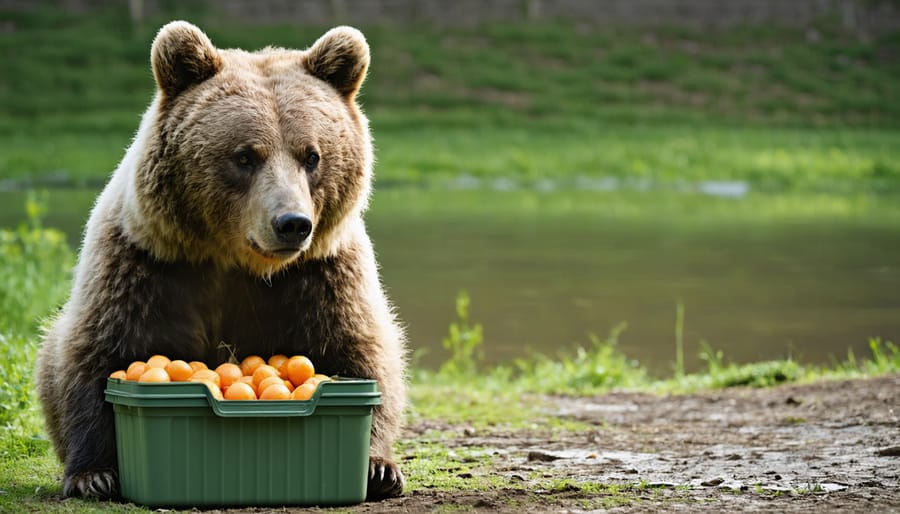
Campfire and Safety Regulations
Fire Pit Usage
Building a campfire is one of camping’s greatest pleasures, but it comes with important responsibilities. Only use designated fire pits, and never create new ones. Keep your fires modest in size – no higher than 1 meter tall and 1 meter wide. This helps prevent sparks from flying and keeps the fire manageable.
Remember to check local fire ratings before lighting up. During dry spells, fire bans may be in effect. As for firewood, you’ll need to source it locally (within 80km) to prevent the spread of invasive species. Many parks sell approved firewood on-site – this is your best bet!
Pro tip: Collect your kindling before sunset and store it somewhere dry. When you’re done, thoroughly douse your fire with water, not dirt. Stir the ashes and add more water until everything is cold to the touch. A good rule of thumb is: if it’s too hot to touch, it’s too hot to leave.
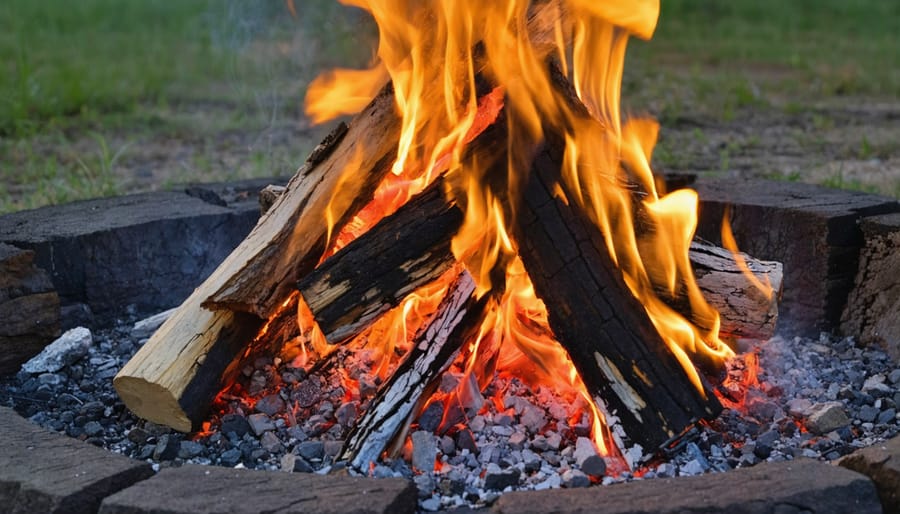
Emergency Protocols
Being prepared for emergencies is crucial when camping in Ontario’s wilderness. Always follow these essential camping safety rules and keep emergency contacts readily available. Store the park office number, local police, and nearest hospital information in your phone and write them down as backup. Remember, cell service can be spotty in remote areas!
Pack a well-stocked first aid kit and know how to use everything in it. Keep emergency supplies like flashlights, extra batteries, and a whistle in an easily accessible location. If you’re heading into backcountry areas, bring a satellite phone or emergency beacon – it could be a lifesaver!
Always inform someone trustworthy about your camping plans, including your campsite number and expected return date. If severe weather approaches, follow park staff instructions and head to designated emergency shelters. For wildlife encounters, stay calm, make noise, and slowly back away while maintaining eye contact.
Quiet Hours and Park Etiquette
Maintaining peace in the great outdoors is a shared responsibility that makes camping enjoyable for everyone. Most Ontario parks observe quiet hours from 10 PM to 7 AM, when campers should keep noise levels to a whisper. This means turning down music, speaking softly, and being mindful of neighboring campsites.
Remember, sound travels surprisingly well in campgrounds, especially across lakes and in the still night air. A good rule of thumb is if you can hear your conversation or music beyond your immediate campsite, it’s probably too loud. Consider using headphones for evening entertainment, and keep children’s activities to daylight hours.
Generator use is typically restricted to between 8 AM and 10 PM, and should only be run when necessary. When setting up your site, position your tent and gathering areas with consideration for your neighbors’ privacy. During the day, while quiet hours aren’t in effect, still maintain reasonable noise levels that won’t disturb wildlife or other campers’ enjoyment of nature.
Pro tip: If you’re planning late-night arrivals or early departures, try to choose a site away from other campers to minimize disturbance.
Camping in Ontario’s beautiful parks is a privilege that comes with responsibility. By following these essential rules – from proper food storage and waste management to respecting quiet hours and wildlife – you’re not just complying with regulations, you’re helping preserve these natural spaces for future generations. Remember to always check current park rules before your trip, as guidelines can change with the seasons. Pack out what you pack in, maintain a clean campsite, and be mindful of your impact on the environment. When we all do our part to camp responsibly, we ensure these magnificent outdoor spaces remain pristine and welcoming for everyone to enjoy. Happy camping, and see you under the stars!

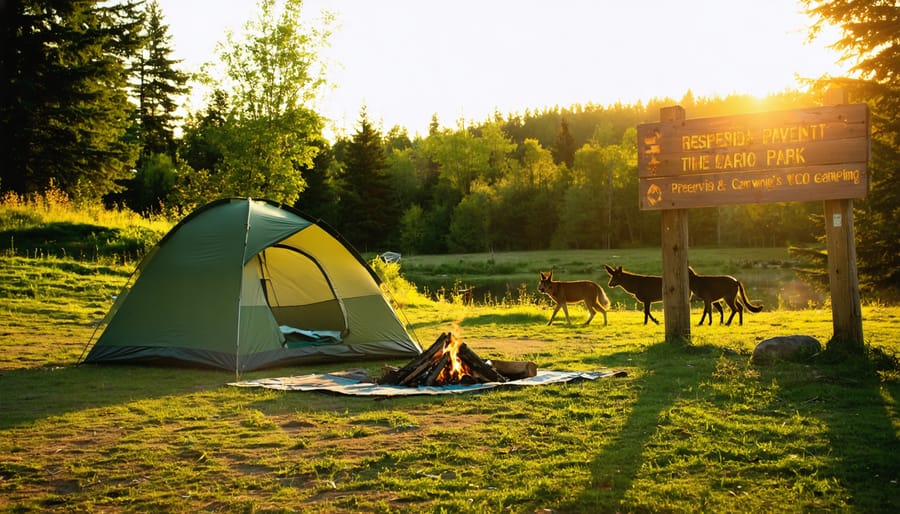




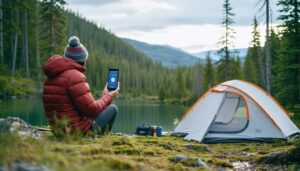
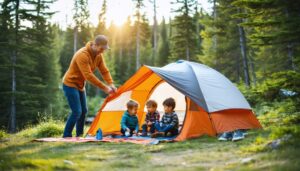

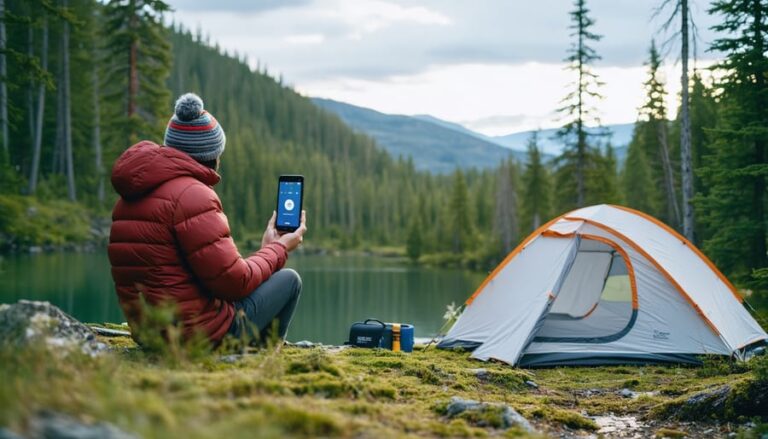
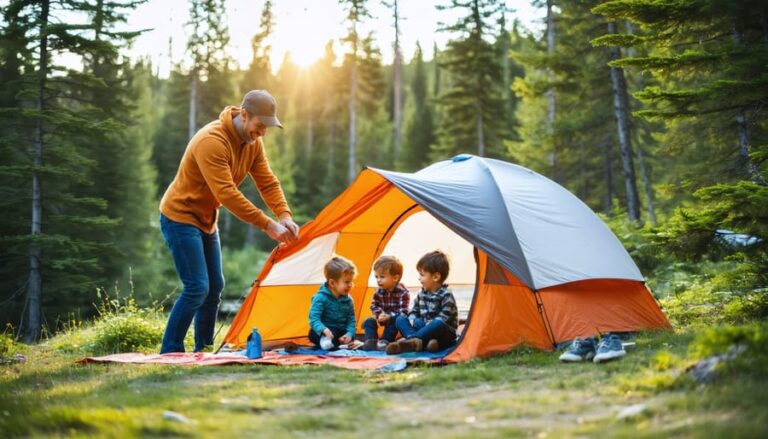
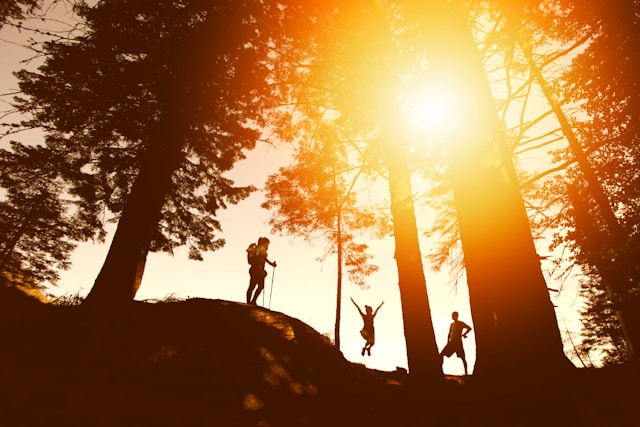

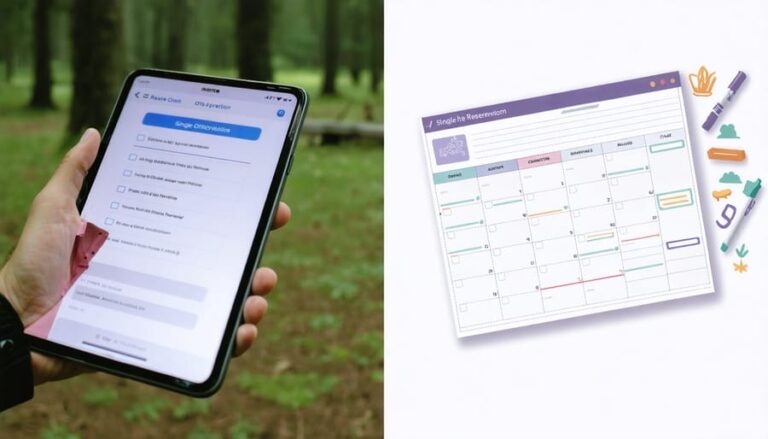
+ There are no comments
Add yours